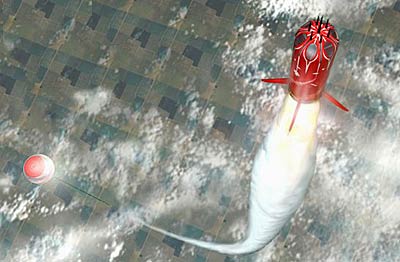How many winners?by Sam Dinkin
|
| Firms will merge, exit, or enter if there are too many or to few. There is a shakeout as undercapitalized and high-cost firms fail. Look for a lot of blood in the coming shakeout. |
Profit still goes down when there are more entrants for two reasons. The first is that the bidders win less often when there are fewer bidders. The second is that the auction is more competitive so the winner gets less profit in each auction. So the profit goes down as 1/n² for n of two or more. Things are pretty good for a monopolist (profit averages $50.00 in this model). Duopolists do okay: they get about $0.25. Three-ways get $0.11. Four-ways get $0.06. Five-ways get $0.04. Ten-ways and they get $0.01 (10 cents when they win 10% of the time).
What did economists find when they studied oil lease auctions: about three bidders per lease.
Can three suborbital companies serve the entire market? Probably. At this point, maybe one could. Who can say? But if it is too huge for three competitors to serve the market, the firms will scale up. Firms will merge, exit, or enter if there are too many or to few. As new products are developed, the game gets repeated over and over. There is a shakeout as undercapitalized and high-cost firms fail. Look for a lot of blood in the coming shakeout.
The price pressure will be on if Burt Rutan is to be believed. “Rutan… estimates that commercial suborbital flights could cost $30,000 to $50,000 ‘initially,’ and as little as $7,000 to $12,000 in a ‘second generation,’” a Washington Post article on Saturday noted.
Some industries are natural monopolies where the two bidders lose money at the duopoly price. Some industries like big airplanes, logic semiconductors, and graphics semiconductors work okay for two, but three would lose money. These industries have major development and infrastructure investments. With high capital costs and low per-unit costs, they are quite competitive and low profit with two competitors. These industries are rare, but maybe like both suborbital and orbital spaceflight.
I am thinking that a healthy suborbital industry will be paying more for labor and fuel than infrastructure. That argues for three or more winners. But the economics of 1/n² profit makes it a lot harder to support four than three. So my bet is on three. Gentlemen, start your engines.
